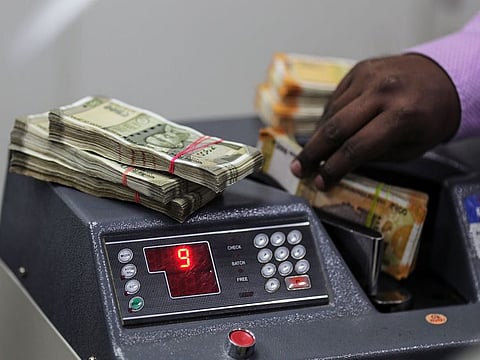Rupee strengthens: Should UAE residents send money to India now or wait?
Exchange houses expect INR–AED to hover near 24.0 as festive transfers gather pace

Dubai: A recent rebound in the Indian rupee has put UAE remitters in a familiar position, deciding whether to transfer money now or hold out in hopes of getting more value later. For thousands of Indian expats planning monthly transfers, mortgage payments or investments back home, timing the currency market can feel like a moving target.
Exchange houses in the UAE say transfers to India have risen in recent weeks, even though the stronger rupee means a slightly lower return per dirham than earlier in the year. Many residents, they say, are leaning towards certainty over speculation.
The rupee’s move back towards the 83–84 per dollar range and around 24 per dirham has encouraged remitters who were waiting through earlier volatility.
Ali Al Najjar, CEO of Al Ansari Exchange, said the shift has influenced customer behaviour. “Over the past few days, we have witnessed a modest but clear rise in remittance activity,” he said, explaining that some residents view the rupee’s firming as a reflection of India’s steady economic outlook. He noted that many who delayed transfers earlier in the quarter have now stepped in, partly out of concern that rates may not improve significantly from current levels.
At Al Fardan Exchange, a similar pattern is playing out. CEO Hasan Fardan Al Fardan said activity picked up in early October as the rupee strengthened following central bank intervention and softer oil prices, which eased pressure on India’s import bill. He added that the market remains “healthy” heading into the winter and year-end period.
What’s next for the rupee?
Analysts and exchange houses expect the rupee to trade in a tight band over the coming weeks, supported by RBI activity and lower oil prices, but still sensitive to global risk sentiment and US monetary policy signals.
Al Najjar said the rupee is likely to move within a narrow corridor, pointing to 87.50 to 88.50 per dollar, translating to roughly 23.82 to 24.10 against the dirham. Al Fardan expects a similar range, noting that ongoing US–India trade dialogue and stabilising crude markets support a steady outlook. Both warn that geopolitical shocks or a rebound in energy prices could quickly shift sentiment.
Remitters split transfers to manage risk
With the currency not expected to make sharp moves in the immediate future, UAE residents are increasingly splitting remittances into multiple transfers rather than waiting for an ideal rate.
Al Najjar said many customers with fixed timelines, school fees, home loans, monthly upkeep, are sending now to avoid potential currency surprises later in the quarter. “Market sentiment, perceived stability, and strategic timing continue to shape remittance flows,” he noted.
Al Fardan added that in an environment where rates can change quickly, a balanced approach offers comfort. “Spreading transfers over time can help manage fluctuations,” he said, particularly as global financial conditions remain data-driven and unpredictable.
Seasonal lift, but macro still leads
Remittances typically rise toward year-end as households clear obligations, plan investments or support families before the new calendar year. Exchange providers say this trend is visible again and should continue, but the rupee’s direction will remain tied to broader forces such as oil markets, policy moves in Washington, and RBI intervention.
For many UAE residents, the rupee may not move dramatically in the very near term, so certainty has value. Those with regular payments are opting to transfer earlier; those with flexibility are spreading out their remittances and using tools like rate alerts to capture favourable moments.
Sign up for the Daily Briefing
Get the latest news and updates straight to your inbox


